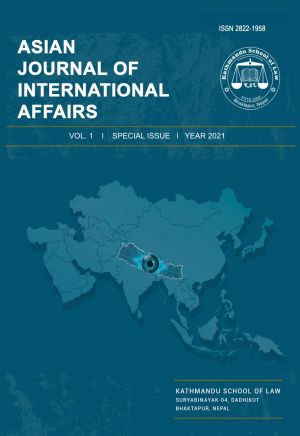Three Dimensions to Understand “a Global Community of Shared Future”
DOI:
https://doi.org/10.3126/ajia.v1i1.44753Keywords:
Global Community of Shared Future, Dynamic Model, Foreign Policy of China, Belt and Road Initiative, EuropeAbstract
A Global Community of Shared Future for mankind (GCSF)1 was put forward from legalizing of the great rejuvenation of the Chinese nation, China’s answer to the questions of our times, to promote human progress echoing the trend of the times It provides a new world view and has significant implications for the world. However, the current literature is insufficient in helping us comprehend the concept comprehensively. In this article, we will propose a model to understand GCSF from three dimensions, in which we consider GCSF as a process, instead of a static state. Three dimensions are given to grasp both the conceptual and practical aspects of GCSF: the time dimension, space dimension, and logic dimension. We argue that we should understand GCSF from the angles of history, reality, and the future. It starts from the neighbouring countries, then developing countries, and finally seeks to include all peoples in the world. Besides, the shared future is based on an independent and connected future. Common targets, common responsibilities, and a common identity are necessary for laying the foundations for GCSF. The model can be adapted to analyze the political phenomenon of GCSF in different periods and scales. As the Belt and Road Initiative (BRI) is the major international cooperation mechanism to build GCSF, we adopt the model to analyze the case of China-Europe relations in the context of BRI.
Downloads
Downloads
Published
How to Cite
Issue
Section
License
© Kathmandu School of Law and Author/s
No part of the publication shall be reproduced or transmitted in any form by any means, electronic or mechanical- including photocopying, recording, or any information storage or retrieval system- for commercial purposes without written permission from the copyright holder. Readers are, however, encouraged to quote or reproduce material from this journal with due acknowledgement to the author/s and AJIA for academic purposes.




